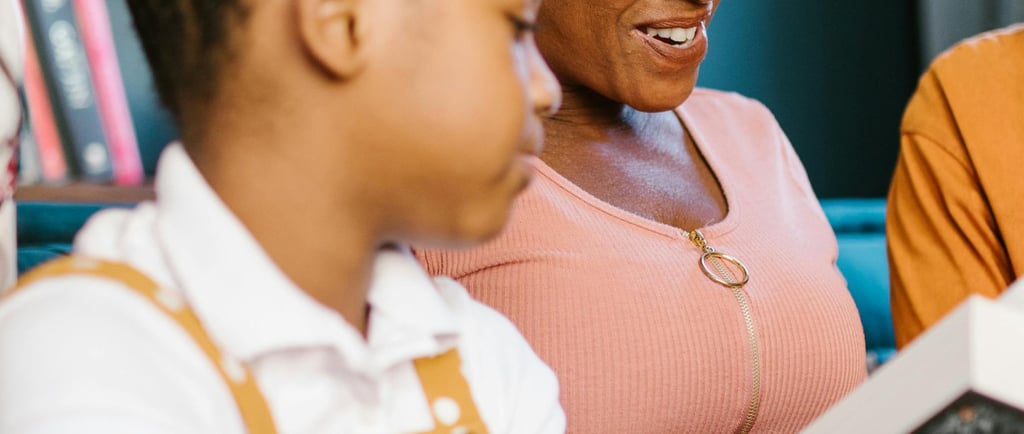The Power of Stories
How Reading Builds Connections Across Generations
10/24/20243 min read


The Power of Stories: How Reading Builds Connections Across Generations
Reading isn’t just a tool for learning; it’s a way to connect people across generations. Whether it’s reading a classic story passed down from grandparents or sharing a new favorite book with a child, stories have the unique ability to bridge gaps between age groups, cultures, and life experiences. For parents, caregivers, and educators, reading together offers more than just educational benefits—it creates opportunities for bonding, building empathy, and sparking conversations that last long after the book is closed.
One of the most meaningful aspects of reading with children is the way it opens up discussions about values, emotions, and shared experiences. When a story resonates with both the adult and the child, it becomes a springboard for deeper conversations about life. For example, a story about friendship might lead to a discussion about the importance of kindness, or a tale of adventure could spark a conversation about facing fears. These shared experiences through books allow both adults and children to reflect on what’s truly important and how to navigate life’s challenges together.
Books also provide a space for children to see themselves in the characters, and when adults share these stories with them, they can guide the child’s understanding of those characters’ experiences. This is particularly valuable when it comes to complex emotions or situations that children might find difficult to navigate. For example, reading a book about a character dealing with grief can help a child process their own feelings of loss, while having an adult there to provide comfort and insight makes the experience more meaningful. Through these conversations, reading becomes a way for adults to offer support and guidance in an indirect but powerful way.
For grandparents or older family members, sharing stories that they enjoyed during their own childhood creates a sense of continuity and shared tradition. These stories, often passed down through generations, carry not only entertainment but also cultural values and lessons. When children hear a story that their parents or grandparents once loved, it strengthens family bonds and creates lasting memories. It’s a way to pass on knowledge and family heritage, while also building a shared love of reading that can span generations.
In the classroom, reading together fosters a sense of community among students of different backgrounds. A diverse selection of books allows children to see life from different perspectives, which builds empathy and understanding. Teachers can use books as a tool to discuss important social issues, helping students learn how to relate to others who may have different life experiences. When children read about characters from other cultures or backgrounds, they gain a broader understanding of the world and learn that despite differences, we all experience similar emotions and challenges.
The beauty of reading is that it’s a simple, accessible activity that can be enjoyed by people of all ages. Whether it’s a parent reading to a toddler before bed or a grandparent sharing a beloved classic with their grandchildren, the act of reading together strengthens relationships. It creates opportunities for conversations that might not otherwise happen and helps build a foundation of trust, empathy, and shared understanding. In a world where technology often pulls us apart, sitting down to read a book together brings us closer in ways that nothing else can.
Reading is more than just a skill—it’s a powerful way to build connections, spark conversations, and create memories that last a lifetime. Whether you’re reading to your child, sharing stories with your students, or passing on a favorite book to the next generation, remember that the stories we share have the power to shape how we see ourselves and the world around us.


